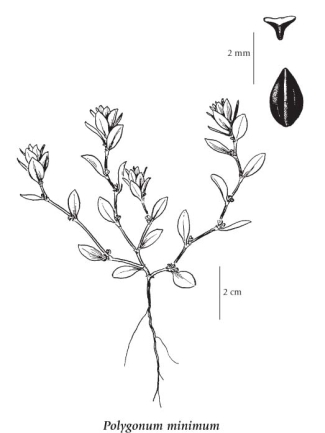Polygonum minimum S. Watson
leafy dwarf knotweed (broadleaf knotweed)
Polygonaceae (Buckwheat family)
Introduction to Vascular Plants
leafy dwarf knotweed (broadleaf knotweed)
Polygonaceae (Buckwheat family)
Introduction to Vascular Plants
